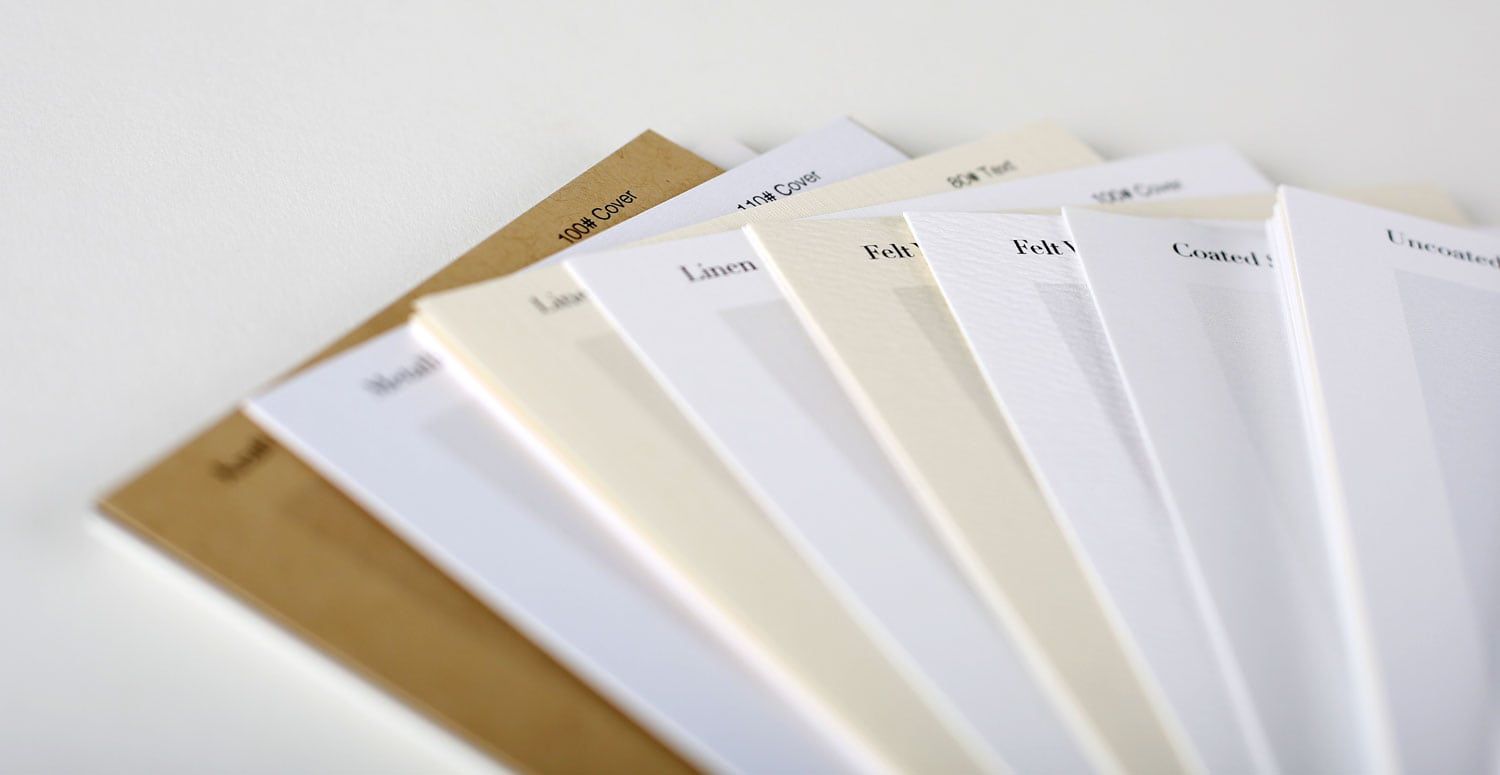
5 Tips for Choosing the Right Paper Stock
Commercial printers aim to not only produce high-quality prints that meet client expectations and industry standards, but to create showstopping work that gets results—which makes choosing the right paper stock crucial. In the vast landscape of paper stocks where each variant tells a unique story, choosing the right paper stock is an important and nuanced decision that impacts the print quality, sustainability, and overall perception of the printed material.
Recognizing that the type of paper selected will significantly affect the appearance, feel, durability, and perception of the final product, here's 5 tips for choosing the right paper stock to ensure your print quality stands up and stands out.
1. Understand Paper Weights and Types
Paper weight refers to a paper’s thickness and stiffness. Measured in pounds or grams per square meter, heavier papers can be ideal for high-end marketing materials, offering a luxurious feel and better durability. Lighter papers are suitable for everyday use, like office documents or flyers. The weight and thickness of the paper used in a printing job can make a big difference in its quality and cost. For example, mailed pieces are usually charged by weight, so lighter, thinner stocks may work well. However, professional presentations often call for heavier, thicker stocks, while projects that aim for archival quality can be achieved with both thicker and thinner papers.
Alongside paper weight, the type of paper and the finish—coated vs. uncoated, matte vs. glossy—affects ink absorption, color representation, and project outcome. Coated papers, for instance, can help provide sharper images, making it an ideal selection for projects like magazines, brochures, catalogs, photographs, and marketing materials where a sleek or glossy appearance is desirable. What type of paper and finish at which weight or thickness is right for your project?
2. Consider Paper Brightness
Paper brightness refers to the amount of light reflected off the paper surface. For applications emphasizing sharp images and vibrant colors, like photography and marketing, higher brightness levels are recommended. Conversely, for documents with minimal graphics or requiring a subtler appearance, slightly lower brightness may be suitable.
Higher brightness levels (measured on a scale from one to 100) enhance contrast and make colors pop, crucial for vibrant, eye-catching prints. According to a study by the Rochester Institute of Technology, brightness measuring 90 or above can significantly enhance visual perception of print quality—and color can influence 85% of customers’ purchasing decisions. What constitutes vibrant, eye-catching prints and which brightness level will make your project pop?
3. Evaluate Print Job Requirements
The purpose of the print job dictates the paper selection. High-quality brochures and catalogs ultimately require vibrant color reproduction and image clarity, which can be achieved with both coated and uncoated paper stocks in a wide variety of thicknesses, where business cards and postcards are benefited specifically by heavy cardstocks to best convey quality and professionalism. When considering the print job requirements and what the project needs to convey, are you clear on the goals of your selected paper and which selection will best meet your specific print job requirements?
4. Test for Compatibility with Printing Technology
Different printing technologies—inkjet vs. laser, digital vs. offset—work better with specific paper types. Inkjet printers, for example, perform well with papers designed to absorb ink quickly, preventing smudge. Laser printers need heat-resistant papers. Ultimately, the type of paper and size, color, weight, coating, brightness, and opacity, all come into play when choosing the right printer paper for the job. Testing how different papers run through the printing equipment ensures optimal print quality and machine performance. Are you familiar with the paper types that work best with your printing equipment?
5. Factor in Environmental Considerations
Customers are increasingly drawn to businesses that demonstrate social responsibility. Engaging sustainable paper stock can enhance your brand’s reputation and lead to increased loyalty and sales. In terms of long-term benefits for the planet, your business, and your bottom line—eco-friendly paper stock that is certified by the Forest Stewardship Council (FSC) can reduce your carbon footprint, save costs, and boost your brand image with today’s consumers. When selecting stock with sustainability in mind, are you familiar with what’s available in sustainable, recyclable, and FSC-certified paper stock?
Millcraft: Just Ask
Choosing the right paper stock is a layered decision that impacts the print quality and overall perception of your printed material. Let these 5 tips help you better understand paper characteristics and what’s necessary for selecting the best paper stock for your project at hand:
- What type of paper at which weight is right for your project?
- How bright for vibrant colors, eye-catching prints?
- Are you clear on print job requirements and the goals of your selected paper?
- Are you using paper types that work best with your printing equipment?
- Is your forward-thinking business familiar with sustainable paper stock options?
When selecting the right paper stock to ensure your print quality stands up and stands out, establishing a trusted relationship with a paper supplier like Millcraft allows you access to expert advice and a wide range of paper options. Suppliers can provide samples and data on paper performance, helping you make informed decisions based on specific project requirements. Millcraft’s team of experts is available to guide you through these decisions, Just Ask.
By: Jen W. O’Deay
To talk with a Millcraft team member about paper stock selections for your business, contact here.
Sources Used in This Article:
https://www.redrivercatalog.com/infocenter/brightness.html
https://www.officedepot.com/l/ideas-center/buying-guides/paper-buying-guide
https://www.syloon.com/the-complete-guide-to-paper-weight